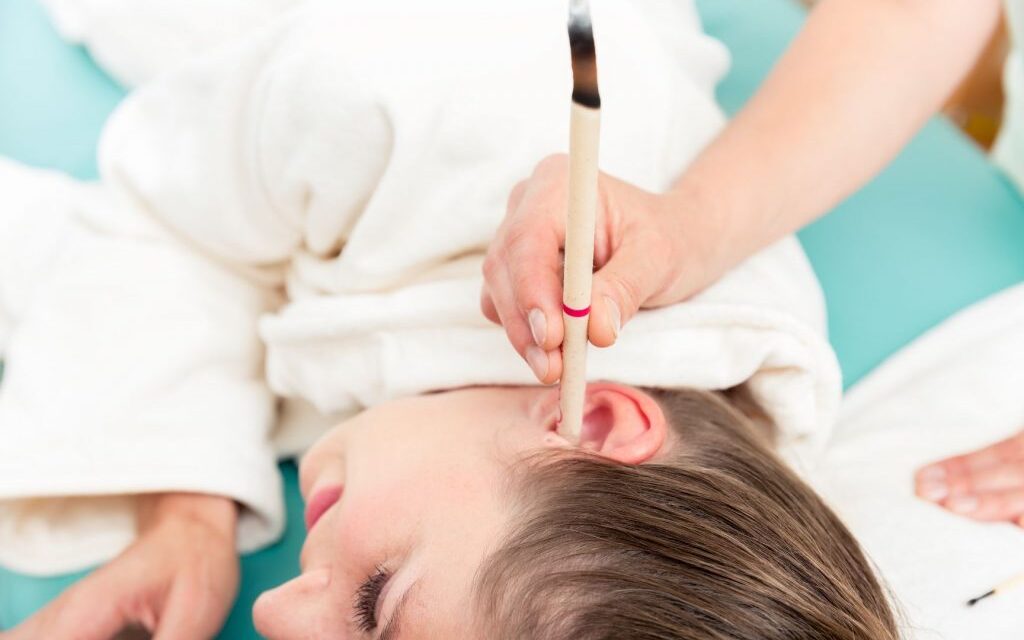Countless different treatment options are available these days for conditions such as excessive earwax production. However, not every solution is necessarily as reliable or as safe as others – which can leave you struggling to find the most effective solutions for your needs. With this thought in mind, today, we’re taking a look at some of the key things you need to know about ear candling (ear coning), a growingly popular treatment option that has been used for years for managing ear wax. But does it genuinely work?
What is Ear Candling?
Before we go further, we should first define what ear candling is. Ear candling is a procedure that uses a narrow candlestick to draw softened ear wax from the ear. It is a form of alternative medicine; as such, ear candling is generally not recommended by healthcare professionals.
Ear candling is also known as hopi candles, ear cones and other variations. Typically, most people will be looking for "do hopi candles work", "do hopi ear candles work", "ear candle wax removal", "how to use ear wax candles" and "hopi ear candling results" - read below to find out the dangers.
How Is Ear Candling Done?
During ear candling procedures, a narrow hollow candle is gently placed at the entrance to the ear canal (into the outer ear canal), with the patient lying on their side. The ear candle is lit and allowed to burn slowly, with the candle wax reducing over time accordingly.
This process continues until the candle is incredibly short, just a few inches from the patient’s ear. Then, the candle is removed, and the ear candling session procedure is complete.
During the ear candling process, advocates claim that the heat of the candle softens the ear wax. Meanwhile, the flame supposedly creates a negative pressure balance within the candle, which draws out the ear wax. Often, practitioners will show patients the “results” of the procedure after – but is this actually effective?
Does Ear Candling Genuinely Work?
For many people, the concept of a negative pressure gradient drawing ear wax out of the ears sounds legit. Unfortunately, this is not the case, and the evidence suggests that ear candling doesn’t provide any benefits in this regard. There are two critical reasons for this.
First of all, we should address the concept of the negative pressure gradient. Unfortunately, the negative pressure within the candle is not strong enough to draw softened ear wax from the ear, meaning that it is ineffective for removing wax.
Furthermore, it’s worth considering that the candle temperature during an ear candling procedure is surprisingly low. While the flame (at the other end of the candle) is understandably very hot, the candle wax by your ear is unlikely to get warm enough during the process. This means that the ear wax in your ears is also unlikely to soften much at all, if any. This further compounds the lack of negative pressure in the candle, preventing ear candling from working to remove ear wax from your ear.
But What About the Final Proof?
We’ve already mentioned how ear candling practitioners often show their patients proof after the procedure. But if the pressure within the candle isn’t strong enough to draw out any ear wax, what is the proof actually?
Well, in most cases, the “proof” that you’re shown after an ear candling procedure is usually just burnt paraffin from the candle itself. Therefore, it’s important to keep an open mind with ear candling since the reality is usually much less impressive than it seems.
What are the Risks of Ear Candling?
In addition to being ineffective for removing ear wax, it’s important to consider that ear candling can actually be an incredibly dangerous procedure. This is since your ears, by their nature, as incredibly sensitive organs. After all, the ear’s role is to interpret minuscule sound waves and convert this information to your brain for processing, so you can hear sounds. They’re certainly not evolved to handle the heat of an open flame or hot, melted wax!
The most obvious danger of ear candling is that of freshly melted hot wax falling on your skin or into your ear, which can potentially burn depending on the temperature. Alternatively, if the candle slips or falls, you could get burned by the open flame. It’s also possible for your ear canal to get filled with toxins after ear candling, preventing you from hearing clearly and potentially predisposing you to ear infections.
Is Ear Candling Ever Safe?
Ear candling is never worth the risk, and putting anything in your ears – unless on professional medical advice – is always unadvisable. As such, considering the fact that ear candling is also ineffective, there is no particular reason to attempt this procedure. It’s most likely a waste of money, and it puts you at risk of injury for no benefit as well. Instead, opt for ear syringing or microsuction like we provide here at Deeside Ear Care.




Things to Know When Thinking About Earwax Removal?
[…] These tools may further push the earwax into the ear canal. Furthermore, you must avoid using ear candles because they may burn and puncture the […]
Olive Oil in Ears: Effectiveness On Ear Wax Removal
[…] this can push the wax further into the ear. Definitely do not using ear candles also known as ear candling to help with hardened wax or any excessive wax build up. Additionally, maintain good ear hygiene by […]
What Is Impacted Cerumen? How to Prevent & Treat Impacted Cerumen?
[…] removal methods, the best and most safe method is the micro suction earwax removal method (unlike ear candling). This process uses a small suction device that essentially sucks out the wax from the ear. Prior […]
Is Microsuction the Best Method of Earwax Removal? (October 2023)
[…] earwax removal, such as; ear irrigation, microsuction, or earwax removal using ear drops (and not ear candling). Among all the available methods, the microsuction method is the best and most effective method of […]
Hearing Loss | What Causes Hearing Loss | Symptoms & Treatment
[…] Treating hearing loss depends on the underlying cause and severity of the condition. The degree of hearing loss can be determined by carrying out hearing tests by a hearing specialist. Some common treatments for hearing loss include (but definitely not ear candling): […]
Do you have Selective Hearing? How Does It Work?
[…] in your auditory systems, such as the onset of a hearing impairment. Do not opt for the likes of ear candling or other technique, but instead, speak to a professional […]